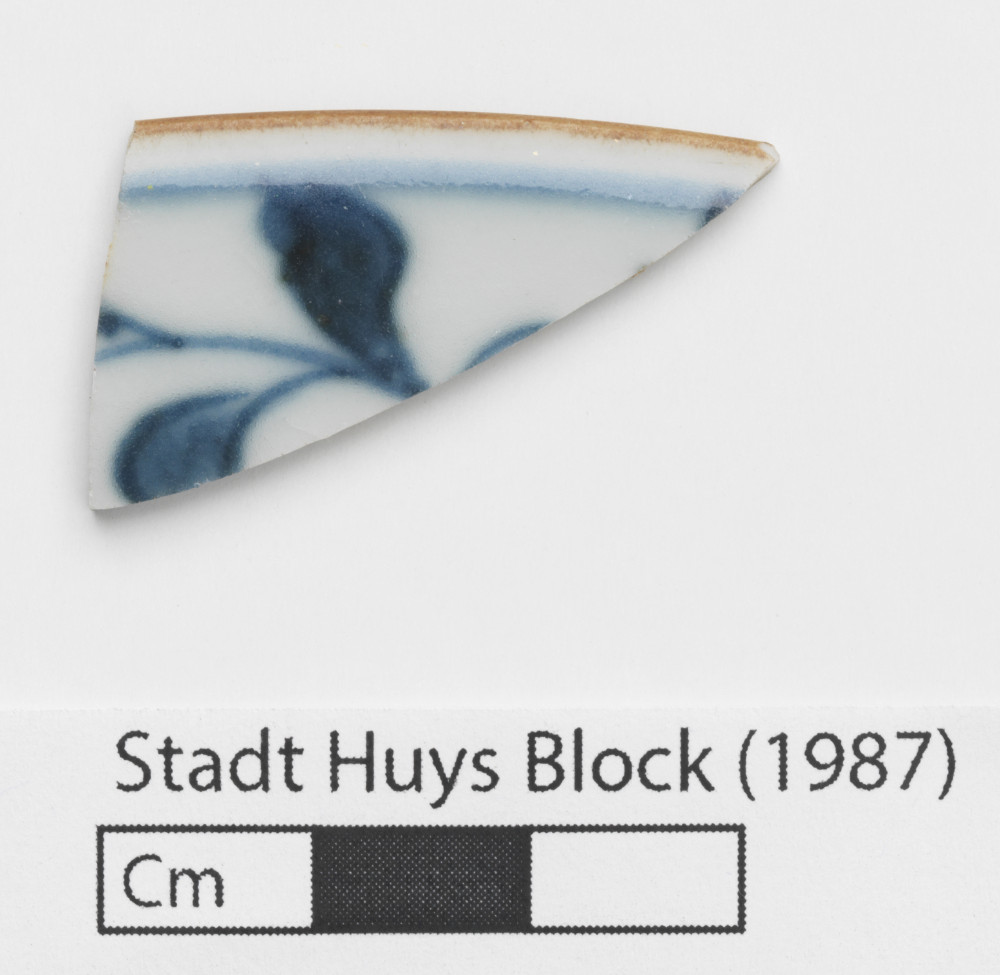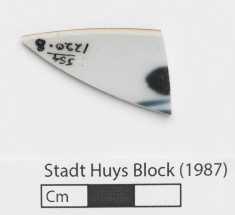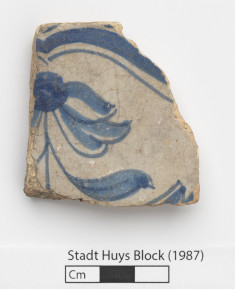Introduction: Lots 8, 9, and 15 are modern designations for adjacent parcels of land that were owned together and used as a single property until the early 1830's. Excavations produced important discoveries like that of the Colonial-era Lovelace Tavern, proving that significant archaeological resources could still exist in urban spaces. Project archaeologists were able to lobby for increased time and funds to continue their work on the strength of these finds, leading to additional discoveries. In all, the project provided considerable information about the history of New York City and its inhabitants from the 17th to the 20th centuries.
The tavern was constructed by the second English Governor of New York, Francis Lovelace, around 1670. Taverns were important spaces for colonial communities, serving as centralized meeting places that fulfilled important social, recreational, political, and economic functions. Lovelace Tavern became New York's temporary City Hall starting in the late-17th century after the Stadt Huys fell into disrepair and was demolished in 1706.
Rationale: Remains of the Lovelace Tavern were first encountered during the excavation of Test Cut AQ. Overall, archaeologists excavated 27 test cuts inside, adjacent to, or within the walls of the tavern, representing around fifty-percent of the total area. Test Cut BJ was a 3- by 5-foot unit placed within the interior of the 17th/18th century Lovelace Tavern. Notably, a Tavern deposit with the remnants of the wooden floor and Feature 15, a 17th-century posthole, were found during excavation. Intact archaeological deposits were mostly found in the eastern part of the test cut. Disturbed deposits proliferated in the western half due to the construction of the Lot 8/9 boundary wall in the 19th century.
Results: This disturbed layer was probably made in the 19th century when workers installing the boundary wall separating Lots 8 and 9 cut into an older, 17th- and 18th-century Lovelace Tavern deposit. The resultant mixed fill layer was unevenly distributed in the test cut, with its greatest depth achieved along its western edge to 8- to 9-inches below excavation surface. The layer was absent in the center and present in the eastern half to only 3.5-inches. Artifacts found in this layer include a lot of building materials, suggesting that part of the tavern building was also damaged when the lot wall was constructed.
Lot 9, Test Cut BJ, Strata II, Level A
-
Collection method
Trowel, Wetscreen (1/4-inch mesh). Natural Level in Eastern Half; Arbitrary Level in Western Half.
-
Soil description
Black and Yellow Clayey Silt
-
Munsell
2.5Y 7/6, 2.5Y 2/0, 10YR 5/4







